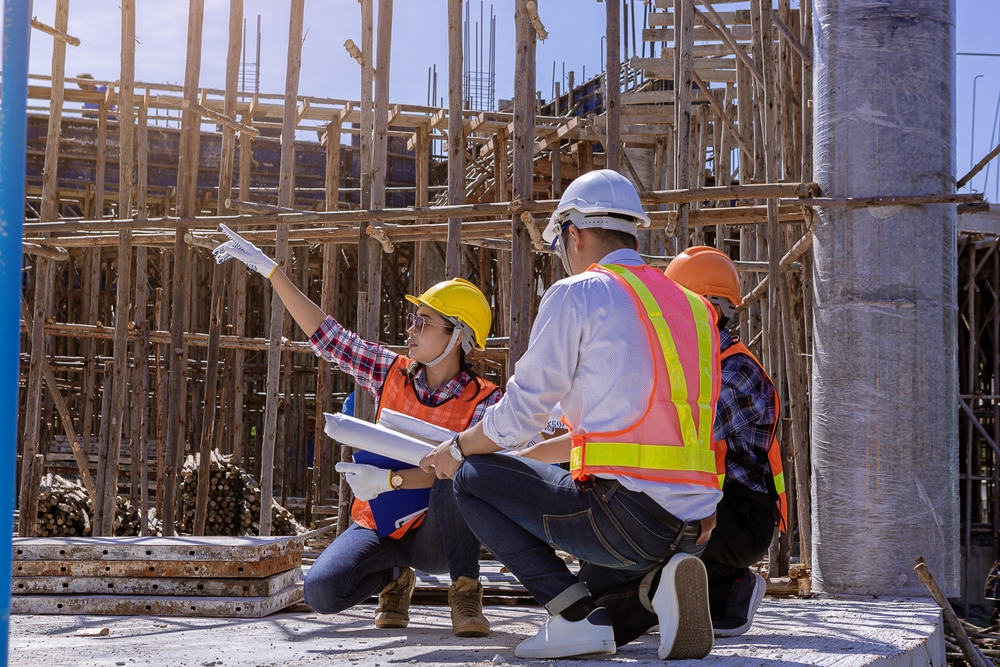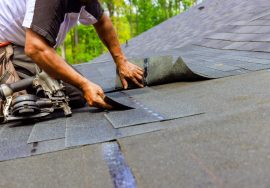The Role of 5G in the Future of Construction
The Role of 5G in the Future of Construction

5G in the Future of Construction: 5G, the fifth-generation wireless technology, is revolutionizing various industries by offering faster internet speeds, lower latency, and greater connectivity. For the construction industry, 5G holds the potential to significantly improve efficiency, safety, and productivity. By enabling advanced technologies like IoT, augmented reality (AR), drones, and robotics, 5G is transforming how construction projects are managed and executed. Here’s a detailed look at how 5G will shape the future of construction.
1. Real-Time Data and Communication
One of the biggest advantages of 5G in construction is its ability to support real-time data transfer and communication across devices, workers, and project sites. With near-instantaneous connectivity, construction teams can share and access critical information more efficiently.
Benefits:
- Faster Decision Making: 5G allows for immediate access to project data, enabling teams to make decisions faster and reduce delays caused by slow communication.
- Enhanced Collaboration: Remote teams can collaborate in real time, sharing designs, plans, and data, leading to more seamless coordination between different teams and departments.
- Improved Project Management: Real-time data from the field can be integrated into project management software, allowing for better monitoring of progress, resource allocation, and timelines.
Example:
A project manager at headquarters can instantly view the status of an ongoing build through real-time video feeds and data sent via 5G from remote sites, making quick adjustments to prevent delays.
2. Advanced Use of Drones and Robotics
Drones and robotics are already being used in construction, but 5G’s low latency and high bandwidth will make these technologies even more efficient. 5G allows for faster data processing, enabling more complex operations and remote control of heavy machinery.
Benefits:
- Enhanced Site Monitoring: Drones equipped with 5G connectivity can capture and transmit high-definition video and images in real time, providing instant updates on site conditions, safety risks, and progress.
- Automated Construction: Robots can perform tasks such as bricklaying or welding with greater precision, thanks to 5G’s ability to transmit instructions and data with minimal lag.
- Remote Operation of Machinery: Heavy equipment such as cranes, bulldozers, and excavators can be controlled remotely with high accuracy and responsiveness, reducing the need for on-site personnel in hazardous environments.
Example:
Drones with 5G connectivity can fly over construction sites to inspect areas that are difficult for workers to access, instantly transmitting data back to project managers for review and decision-making.
3. Improved IoT Integration and Smart Construction Sites
The Internet of Things (IoT) is transforming construction sites by connecting various tools, machinery, and systems to a central network. With 5G, IoT devices on construction sites can communicate with each other seamlessly, creating smart construction environments that are highly efficient and safe.
Benefits:
- Real-Time Monitoring: IoT devices equipped with sensors can monitor equipment performance, environmental conditions, and worker safety in real time. This ensures that potential issues, such as equipment malfunctions or safety hazards, are detected and addressed promptly.
- Optimized Resource Management: 5G-powered IoT devices can track the movement and usage of materials, tools, and machinery, ensuring optimal resource allocation and reducing waste.
- Safer Working Environments: Wearable devices connected to the 5G network can track the health and safety of workers in real time, alerting supervisors if any unsafe conditions or incidents arise.
Example:
Smart helmets and wearables connected through 5G can monitor workers’ vitals and environmental conditions, instantly notifying safety managers of any irregularities that may pose a health risk.
4. Augmented and Virtual Reality for Enhanced Planning
Augmented Reality (AR) and Virtual Reality (VR) are already proving useful in construction for project visualization and design. With the high-speed connectivity provided by 5G, AR and VR applications will become even more practical and precise, aiding in both planning and on-site tasks.

Benefits:
- Enhanced Project Visualization: AR allows workers to overlay digital models on real-world structures, helping them better visualize how various components will fit together before physical construction begins.
- Virtual Training and Simulations: Workers can use VR to train for complex construction tasks in a simulated environment, reducing the risk of on-site errors.
- Remote Design Collaboration: 5G allows for real-time collaboration on 3D designs and virtual walk-throughs of construction sites, improving planning accuracy and reducing rework.
Example:
An architect can use AR to visualize how a building’s design will look on-site before construction begins, providing immediate feedback to the construction team on design adjustments.
5. Improved Safety through Predictive Analytics
With 5G’s ability to transmit large volumes of data quickly, construction sites can leverage predictive analytics to improve safety and reduce risks. Data from sensors, wearables, and machinery can be analyzed in real time to predict potential safety hazards or equipment failures.
Benefits:
- Proactive Safety Measures: Real-time data analysis allows construction managers to identify safety risks before they lead to accidents, such as equipment malfunctions or worker fatigue.
- Predictive Maintenance: 5G-connected sensors can monitor equipment for signs of wear and tear, predicting when maintenance is needed to prevent breakdowns and delays.
- Incident Response: If a safety incident occurs, 5G enables real-time alerts to emergency response teams, ensuring quicker action and minimizing harm.
Example:
A construction crane equipped with sensors can continuously send performance data to a central system via 5G. If the system detects signs of potential failure, maintenance can be scheduled before the crane breaks down, preventing delays and ensuring worker safety.
6. Faster and More Reliable Construction Management Software
Construction management software is essential for overseeing large projects, but its effectiveness is often limited by slow internet connections or delays in data processing. 5G will revolutionize construction management software by offering faster and more reliable connectivity, enabling real-time updates, smoother collaboration, and better overall project management.
Benefits:
- Instant Updates: Project managers can receive real-time data on site progress, material usage, and labor performance, ensuring that projects stay on schedule.
- Cloud-Based Collaboration: With faster data transfer speeds, teams across different locations can collaborate on the same project in real time, accessing and updating files from the cloud without delays.
- Better Data Integration: 5G allows for the seamless integration of data from various sources, such as drones, IoT devices, and sensors, into a single construction management platform.
Example:
Construction management software connected to the 5G network can track the progress of multiple projects across different locations in real time, providing managers with instant feedback on resource allocation and project status.
Conclusion
5G is set to revolutionize the construction industry by enabling real-time communication, improving the efficiency of advanced technologies like drones and robotics, and creating smarter, safer construction sites. From faster data processing to enhanced safety measures, 5G will allow construction professionals to execute projects more efficiently, cost-effectively, and sustainably. As the construction industry continues to adopt 5G and related technologies, we can expect to see faster project completion times, reduced costs, and improved safety outcomes.
External Resources for Legal Guidance
5G in the Future of Construction
Read more related articles to enhance your knowledge and make informed decisions
10 Essential Steps in the Building Construction Process
How to Choose the Right Materials for Your Construction Project








